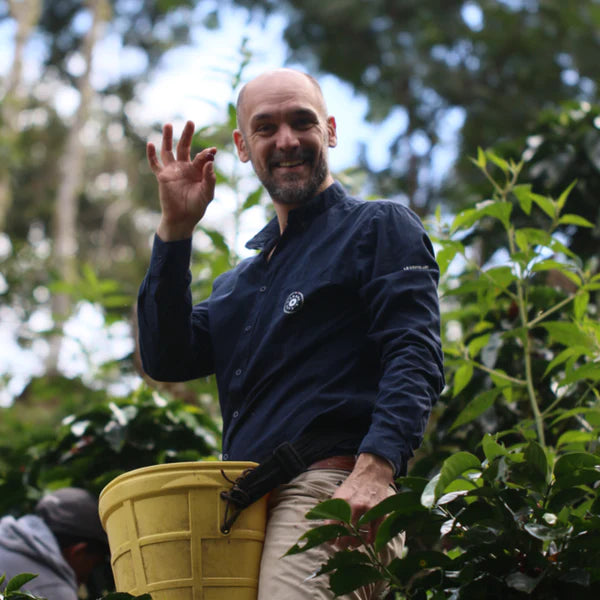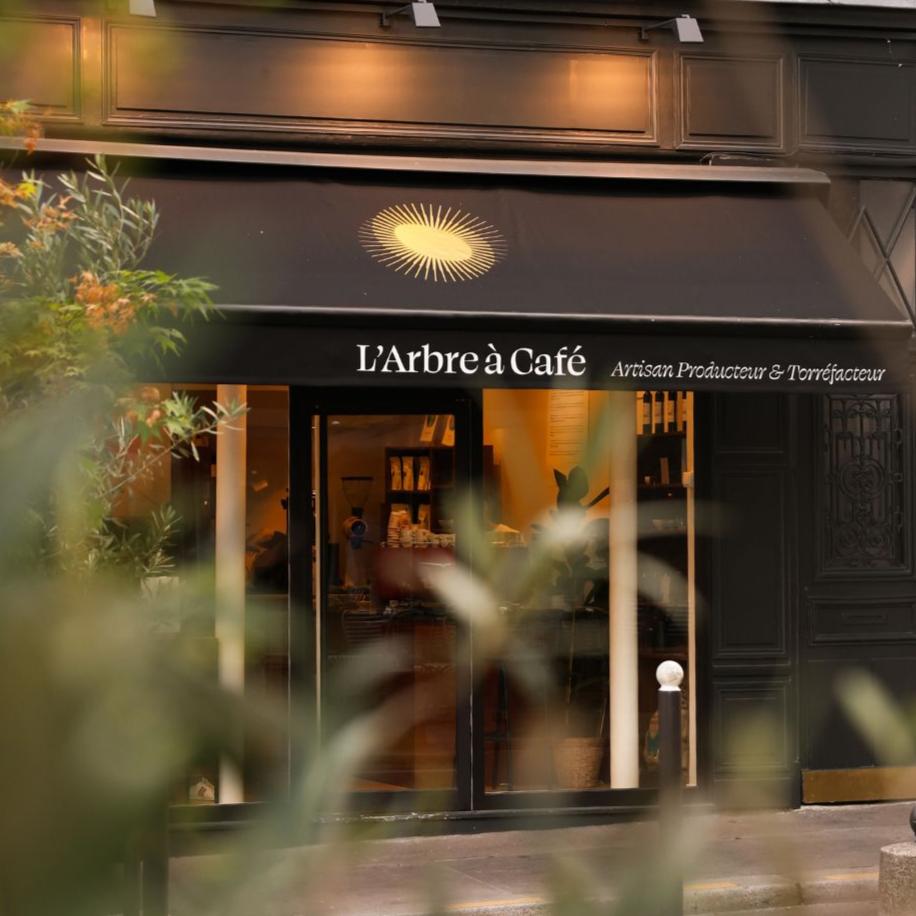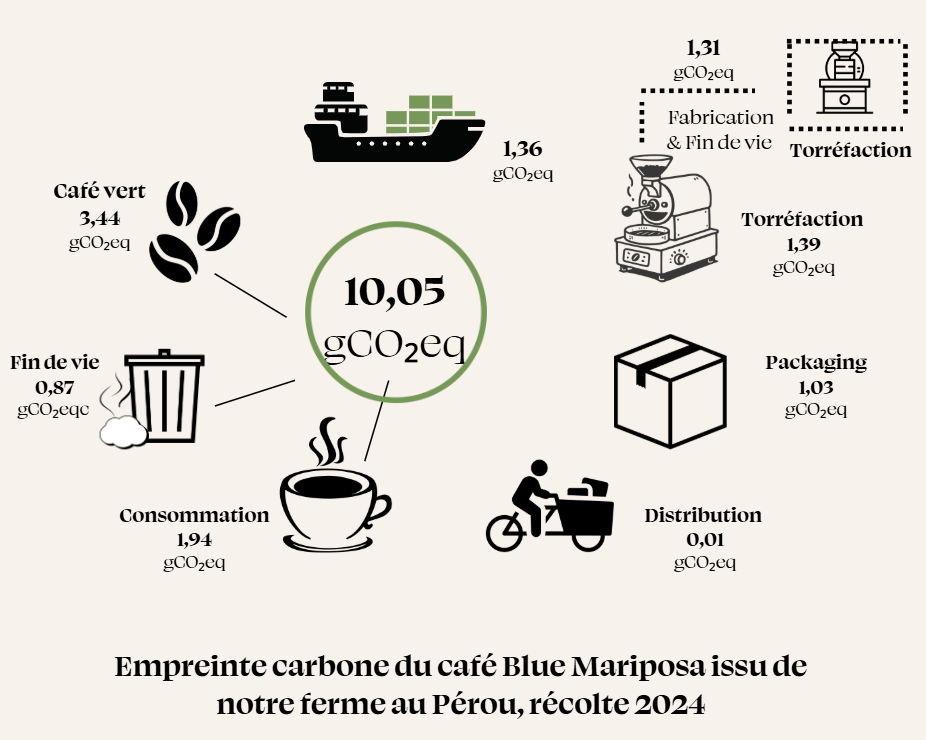We are all different and we all have very particular tastes. Some like sour things while others prefer bitter things, some like fruity tastes and others like floral tastes... and so on!
So here are a few guidelines to help you choose and make you dream, travel and choose the coffee or coffees that suit you best, the one(s) you will offer, or on the contrary the one you will drink every morning.
Tastes and Colors
Coffee lovers like to classify coffees according to their aromatic profile or more precisely their taste. Taste is the set of sensations experienced by the nose and the mouth. So there are, of course, the aromas (scents in the mouth), but also the flavors (salty, sweet, etc.), the textures (silky, astringent, etc.), the body (weight of the coffee in the mouth or density), the nervous sensations of spiciness or refreshment, for example. Here, to better accompany you, we propose three different groups: the aroma, the flavors, the body.
Floral coffees
There are so many flowers to offer and find in coffee! Yes, some coffees are particularly floral and sought after by many coffee lovers for both espresso by the way and mild extractions. The two most common flowers in a coffee bouquet are Jasmine and Coffee Flower. The Jasmine you know well, the Fleur de Café, you can discover it by buying a jar or a liqueur at L'Arbre à Café. Other floral aromas are also common such as hawthorn or especially honeysuckle and rose, but also chamomile or violet.
Gedeo and Moka Bunna Bet are the floral coffees par excellence. Coming from the South of Ethiopia, from the regions of Yrgacheffe and Guji, the jasmine notes jump to the nose and are intense. A complex Yrgacheffe like a Guji is a real bouquet of white flowers: Jasmine, Chamomile, Honeysuckle etc...
Unna's Kent is marked by the scent of rose petals. It is intense, bewitching, heady, and therefore moving.
The Geisha Washed and Finca Deborah and Finca Hartmann are also very jasmine, honeysuckle and often with a touch of marshmallow. The combination of these floral aromas with citrus and white fruit notes is one of the secrets of high quality Geisha.
Finally, notes of violet, as in pinot noir, can assert themselves in coffees from East Africa. The violet is particularly dear to us because it is the flower of love! The love sung by Luis Mariano, but also the shape of love since its petals are heart-shaped. Love. The notes of violet give tenderness and finesse to the formidable Bombo.
Fruity coffees
"A fruit basket! This cup is a real fruit basket!" How many times have we not heard this wonderment at a richly fruity coffee. In wine, we talk about nuts, red fruits, black fruits, fruits (white but often yellow) with a stone, white fruits, berries such as currants, citrus and tropical fruits. This group often includes berries such as cranberries, cranberries and juniper. In coffee, it's the same but not always the same basket, as apple and grape are very present.
The coffees that seem to be immediately fruity are the natural coffees, fermented in the dry process or in carbonic maceration. They are often explosive!
Unna's Kent Naturel, Bombo, Nature exude red fruits like strawberry and raspberry.
The Bombo, the Natural Geisha and the Qima: blueberry and blackberry, hmmm.
Gedeo is a perfect representative of its terroir since apricot, peach and pear are dominant.
The fruitiness is not the prerogative of natural coffees, some washed and some varieties carry the juices. This is the case of the Bourbon variety for example but also of Colombia and Castillo or Caturra.
Bunna Bet Mocha exhales stone fruits and especially apricot, stewed moreover. It is therefore of a rare greediness.
The Manana, carried by a freshness and a perfect clearness, seems close to grape, grenadine, cranberry, coffee fruit, watermelon, and currant.
The Bourbon Pointu is of a rare fruity complexity: exotic fruits, red fruits, black berries, blackcurrant, yellow fruits.
Dried fruit coffees
Dried fruits are very popular with coffee lovers. In fact, gourmet coffee is an ode to this aromatic family, since almond, hazelnut and walnut are called upon. Add pecan and you have the four great nutty aromas of coffee.
The Source is a typical dried fruit coffee, especially with hazelnut.
The Chakra, worthy standard bearer of the Peruvian soils, is typical of the hazelnut coffees. The whole of the dry fruits are summoned there with happiness.
Unna's Kents are pecan, walnut and almond.
Lacu Ten carries deep aromas of dried fruits and tonka beans.
Chocolate coffees
Chocolate notes come in many shades: dark chocolate, chocolate, milk chocolate, white chocolate. While these categories make chocolate lovers jump through hoops, they are nonetheless easy to use and very telling. Anyway, it differs from cocoa powder as in the Bunna Bet Mocha or cocoa bean as in the Natural Geisha and the Origin.
The Iapar Red represents the quintessence of chocolate coffee, a dark and spicy chocolate, as we like them because greedy, smooth and deep.
The Chakra is more milk chocolate.
The Qima is an ode to white chocolate.
The Lacu Ten, on the other hand, like the Liberica, is a manifesto of the darkest and most powerful chocolates.
Spicy coffees
If they are very present in coffee, which was sometimes considered a spice, their expression can be more or less strong depending on the roasting. Pepper, black or green, coriander, cinnamon or clove are common spices in coffee. But you can also find cardamom, paprika, Espelette pepper and many others.
The Red Iapar and Lacu Ten are without a doubt our most peppery coffees. This note energizes these sweet and chocolatey coffees and creates a charming and happy cocktail.
The Qima is the spicy coffee, coming precisely from a country by definition, of spices.
The Bunna Bet Mocha combines cocoa with coriander.
The Diamante is, by its very fermentation, a concentrate of tasty cinnamon.
Mild coffees
Mild coffees delight the palate, especially in Espresso, with their roundness and smooth first taste. The sweetness is particularly appreciated by Latin lovers, in France and in Southern Europe. Coffees from islands and moderate altitudes are always very smooth. But a coffee from high altitudes can also appear very sweet if it is unctuous and especially very "sweet".
The Source, the Nature, the Origin, the Red Iapar, the Chakra, the Lacu Ten, the Pointed Bourbon have this characteristic.
The lively cafés
Liveliness or pleasant acidity is highly sought after in the specialty coffee community because it allows the complexity of a coffee to express itself and because it is one of the signs of high altitude coffees. It gives a freshness to the coffee and especially highlights its aromas. It is often perceived as opposed to sweetness, but the flavors are not exclusive. A well-balanced coffee is precisely a coffee that is both sweet and lively. In coffee, unlike many tastings, the lover plays at naming acidity. It reminds you of the roundness and volume of apples, so it is malic. Does it take you towards yogurt and kefir? Then it is lactic. It reminds you of scotch glue, olives, cocoa beans or even vinegar, then it is acetic. Parmesan or papaya? It is the formic. With lemon, it is citric etc...
All our coffees, a sign of their high quality, are characterized by pleasant and melted acidities, but these are more or less present in the mouth.
Thus, the coffees that will have the least perceived acidity are the Source, Origin, Nature, Iapar, Chakra, Kent, Lacu Ten, Bourbon Pointu.
The ones with notable vivacity and freshness are Manana, Gedeo, Moka Bunna Bet .
Those with a very nice acidity, present, complex and fresh are all our Geisha and Bombo.
Full-bodied coffees
Often used by coffee lovers, "full-bodied" is understood as intense, powerful and marked by a beautiful bitterness. These are coffees often intended for espresso or Italian coffee makers, whose concentrated liquor is appreciated. They are often also marked by their sweetness and their full and generous body.
The Iapar, the Lacu Ten, the Bourbon Pointu
Light coffees
Lightness is not necessarily immediate in coffee and is often associated, in France and in Southern Europe, with a lack of substance. But lightness is not always unbearable! On the contrary! Thus, some of the greatest coffees can appear very light in the mouth and yet be of a crazy aromatic and gustatory complexity. The famous sock juice, like the color of the coffee, which is often expected to be black, is never a gradient of its quality or its expressiveness. They appeal to and are highly sought after by filter coffee lovers in particular, who call them tea-like.
Geisha is without a doubt the ultimate in lightness and light color. And yet, what a silky texture, what an explosion and length in the mouth!
The Bunna Bet Mocha and the Manana sometimes offer a crystal clear and oh so pleasant cup, fresh and aromatic.
To a lesser extent, Chakra is a light coffee as well.
Evening or morning?
Tell me when you drink coffee and I'll tell you which coffee to drink! If the recommendations of the WHO invite to drink 5 coffees per day (see link to Health), it is that some will choose to drink them all in one go, and others to spread them over the whole day, from breakfast to dinner, including the coffee break. It's up to you, we offer coffees for every moment and every occasion!
The breakfast
Breakfast is the time to wake up in the morning and to be a coffee friend! Wake-up coffees are then appreciated, they are chocolatey, soft coffees that take us gently from the foot of the bed.
The Iapar, Chakra or Kent are then the perfect companions for breakfast, the Manana will also bring freshness for summer mornings, you will make the Qima the coffee of the great mornings and Sundays, washed Geisha also.
The coffee break
The coffee break, formerly a snack time, was invented by the Collectif Café in the 1960s, and has become a real ritual essential to the proper functioning of organizations. In fact, it is within companies that we drink the most coffee! So, which coffee to drink at this moment of exchange, concentration and activity?
The more caffeinated coffees are generally appreciated as much as the more aromatic coffees that could be perceived as too exuberant and not "comfortable" enough for breakfast.
The Moka Bunna Bet as well as the Gedeo are then perfect.
For those who started the day with tea or milk, the more chocolatey coffees are also to be preferred, the Iapar Rouge as much as the Chakra Do Dago, in piston as much as in espresso, black or in cappuccino or in flt white. The Qima, the Manana will also be perfect guests for the coffee break. The coffee break is the time to privilege all the latte preparations in general.
The lunch
After lunch, what to drink? Well, that depends on lunch!
You are rather salad and dietetic? Then you will opt for a light coffee filter like the Ethiopians or the Manana and the Bombo.
If you appreciate more the generous and cooked breakfasts then an intense espresso will do your business such as the Ethiopian in espresso, or the Manana and the Bombo or even the Iapar.
In the afternoon
And a kind of coffee time or second coffee break. We often prefer aromatic coffees and mild extractions: Ethiopian or Manana and Bombo . Pure varieties are welcome.
Some will go on the slats as well.
The evening
Yes, the evening is a time for coffee. Either because you are not very sensitive to the effects of caffeine, in which case breakfast coffees will delight you, or because you like coffee, and so do we, but caffeine represents a risk for you. In the latter case, nothing could be easier. Choose pure varieties such as Moka Bunna Bet and Gedeo or Bombo, or even better, Bourbon Pointu which is the least caffeinated variety in the world. We also particularly appreciate the meditation coffees that arethe Bourbon Pointu, the Jacu Bird and the Lacu Ten, all three have different profiles but are engines for travel and endless tasting.
Likewise, our decafs, all of which are produced without chemical inputs and certified organic, are excellent and will confuse those who expect a pale and insipid decaf profile. Our decafs are indeed high quality coffees, without caffeine, and with all their aromatic richness.
More like Filter or Espresso
This is a question that is often asked by coffee lovers, and in view of the preceding paragraphs, it seems clear that we are pushing for an answer: "filter AND espresso". Yes, we like both, we appreciate, depending on the moment and the day, more the finesse, the freshness and the complexity of a mild extraction than the richness and the concentrated generosity of a beautiful espresso.
This is especially true since our omniroast roast is suitable for all preparations.
Of course, the finest coffees express themselves particularly well with gentle extraction, such as Geisha, Bombo, Manana, Qima, Gedeo and Moka Bunna Bet. Washed coffees will reveal their balance and precision, like the Manana.
Of course, that natural coffees, with their sometimes animal notes, very rare at L'Arbre à Café, can be too present in a filter or a Chemex or on the contrary participate in the richness of the cup: the Gedeo, the Qima, the Bombo are so.
Espresso enhances the intensity and richness of coffee. The Naturals for their richness or the Pulp Sun Dried for their balance are the perfect companions.
Now that you know how to choose your coffee according to your tastes, we have compiled a practical guide to help you make a good coffee.




















